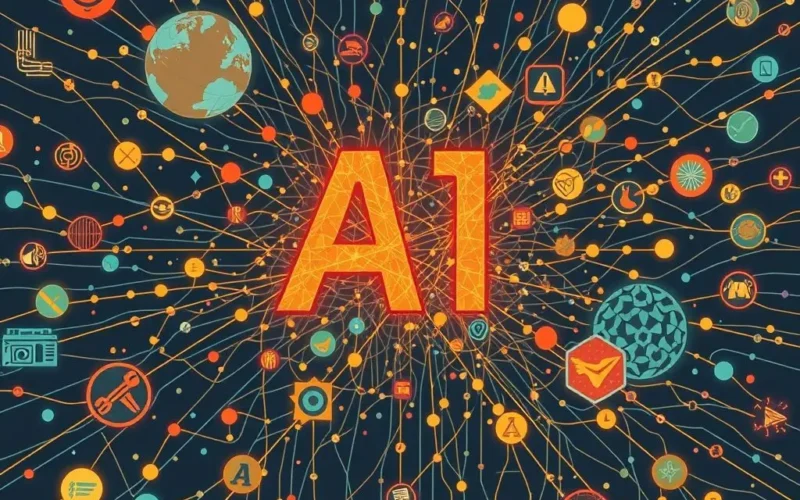Ever scroll through mind-bending AI-generated art, haunting AI music, or surprisingly coherent AI text and wonder: is this really creativity? Or is it just incredibly sophisticated mimicry, a masterful rearrangement of patterns learned from billions of existing human creations?
Defining true creativity, even for humans, is a challenge. But when we talk about artificial intelligence, the question takes on a whole new dimension. Is there a standard, a litmus test, for genuine AI originality?
Enter a fascinating, albeit complex, concept known as the Lovelace Test.
Table of Contents
What Exactly is the Lovelace Test?
Named in homage to the visionary mathematician Ada Lovelace, often considered the first computer programmer for her work on Charles Babbage’s mechanical computer, the Analytical Engine. Lovelace herself mused on the potential of such machines, but notably suggested they could only do what they were programmed to do, lacking true originality – a concept sometimes called the “Lovelace Objection”.
The modern “Lovelace Test,” however, flips this, setting a high bar for AI creativity rather than denying its possibility outright. Proposed by philosophers and psychologists like Sue Blackmore and Selmer Bringsjord (building on earlier ideas by Margaret Boden), the core idea is this:
For an AI to pass the Lovelace Test, it must produce something:
- New and surprising to its human creators.
- Critically, something its creators cannot explain by pointing to the AI’s algorithms or training data.
- Most importantly, something the AI itself could not have predicted or explained based *only* on its internal state, algorithms, and training process at the time of creation.
In essence, the AI must generate a creation that represents a genuine jump, a conceptual leap that wasn’t merely an expected outcome of its design and input data. It must surprise not just us, but its own digital self.
Beyond Pattern Recognition: Why Current AI Might Fall Short
Today’s most impressive generative AI models – the ones churning out images, text, code, and music – are built on powerful machine learning techniques, primarily deep learning. They excel at identifying incredibly complex patterns and relationships within the vast datasets they are trained on. They can interpolate (fill in the gaps), extrapolate (project trends), and combine elements in novel ways based on these learned patterns.
Imagine an AI trained on millions of paintings. It can learn styles, subjects, color palettes, and composition techniques. When you ask it to create a new painting, it pulls from this vast internal library of learned patterns, mixing, blending, and applying them to generate something that looks convincingly ‘creative’ to us.

But according to the Lovelace Test, this might not be *true* creativity. Why? Because the resulting artwork, while novel to the human observer, might still be explainable as a complex permutation and combination of the patterns and data it was trained on. The AI isn’t necessarily making a creative leap outside the bounds of its training space; it’s navigating and synthesizing within it, albeit in sophisticated ways. From the AI’s perspective, its output might be a predictable (though perhaps statistically improbable) consequence of its internal model and the input prompt.
The Challenge of Internal Surprise
The most challenging part of the Lovelace Test is the requirement that the creation be surprising *to the AI itself*. How do you measure surprise in a machine? This points towards deep philosophical questions:
- Does the AI have an ‘internal state’ akin to consciousness or self-awareness that can be surprised?
- How can we distinguish between an AI producing a statistically unlikely but predictable output vs. one that genuinely transcends its programmatic limits?
- If an AI’s process is entirely deterministic (or pseudo-deterministic), can its output ever be truly unpredictable *to itself* given its starting state and algorithms?
Passing the Lovelace Test implies a level of autonomy and internal generation that goes beyond executing complex algorithms on data. It suggests a capacity for conceptual innovation that isn’t just a product of external programming or input.
Curious to see a quick take on this fascinating idea? Check out this short video exploring the concept:
Hypothetical Scenarios: What Would Passing Look Like?
Imagine an AI designed to discover new mathematical theorems. If it were to apply known methods and compute complex proofs, that would be impressive but likely not pass the Lovelace Test. However, if this AI were to suddenly formulate a completely new branch of mathematics, using concepts and logical structures that were not part of its training data or explicit programming, and if its own internal diagnostics registered this as an unexpected deviation, that might be a step towards passing.

Or consider an AI composer. If it generates a symphony in the style of Beethoven mixed with jazz, that’s synthesis. If it spontaneously composes a piece of music employing entirely new principles of harmony and structure, creating an aesthetic experience unforeseen by its creators or its own algorithmic expectations, that would be closer to the Lovelace ideal.
Is the Lovelace Test Achievable or Even Useful?
Some critics argue that the Lovelace Test sets an impossibly high, perhaps even anthropomorphic, standard. How can we ever truly verify an AI’s ‘internal surprise’? Others suggest that focusing on whether an AI *itself* is surprised is less important than whether its output is genuinely novel and unpredictable from our external perspective, opening new avenues for human creativity and understanding.
Regardless of its feasibility as a strict pass/fail test, the Lovelace Test serves as a powerful philosophical thought experiment. It pushes us to consider what we *really* mean by creativity, originality, and intelligence when applied to non-human systems. It highlights the distinction between sophisticated simulation and potentially genuine innovation.

Frequently Asked Questions About the Lovelace Test
Q: Is any current AI considered to have passed the Lovelace Test?
A: As of now, generally no. While AI has created outputs that surprise humans, it’s argued that these outputs can still be explained as complex computations and recombinations based on their training data and algorithms. Proving the ‘internal surprise’ condition remains a major hurdle.
Q: How is the Lovelace Test different from the Turing Test?
A: The Turing Test focuses on indistinguishability from human conversation – can a machine trick a human into thinking it’s another human? The Lovelace Test, conversely, focuses on the *origin* of creative output – specifically, whether it’s genuinely novel and unpredictable even to the AI itself, regardless of whether it seems human-like or not.
Q: Is the Lovelace Test primarily a philosophical concept?
A: Yes, largely. While it proposes a criteria that *could* theoretically be tested (if we could perfectly understand an AI’s internal state and potential output space), its main value currently lies in stimulating debate about the nature of AI, creativity, and intelligence.
Q: Why is it named after Ada Lovelace if she was skeptical about machine originality?
A: It’s named in *homage* to her foundational insights into computing and her specific questioning of machine creativity, which framed the debate centuries ago. The test uses her name to represent the very frontier of AI’s creative potential that she contemplated.
Exploring the Frontiers of AI Potential
The Lovelace Test remains a profound challenge, a theoretical peak in the landscape of artificial intelligence. It asks us to look beyond the impressive outputs we see today and consider what true digital originality might entail. Could an AI ever genuinely surprise itself with a burst of creative insight?
As we continue to develop increasingly sophisticated AI, this question will only become more relevant. The pursuit of machines that don’t just follow instructions or mimic patterns, but truly innovate, remains one of the most exciting and perhaps elusive goals in the quest for advanced artificial intelligence. Whether the Lovelace Test is the ultimate measure or a fascinating stepping stone, it compels us to think deeply about the nature of creativity in the age of machines.
Did reading about the Lovelace Test spark some thoughts? Share them in the comments below!




